2022 Eugenie Clark Award granted to Jennifer Bigman
In recent years, one of the highlights of the American Elasmobranch Society (AES) conference has become the announcement of that year’s recipient of the Eugenie Clark award. This year the award, which was created in honour of the matriarch of shark biology, was granted to Jennifer Bigman.
Jennifer works as an NRC and NSF Postdoctoral Fellow at NOAA Fisheries, focusing on projects related to climate change, ecology, physiology, evolution, and conservation and management. She pairs data from experiments, global climate models, oceanographic instruments, and field collections to understand how temperature and oxygen affect sharks and other fishes in Alaska’s large marine ecosystems. Her aim is to continue this track record of diverse and impactful elasmobranch research, and bring together disparate fields to answer global questions in elasmobranch biology.
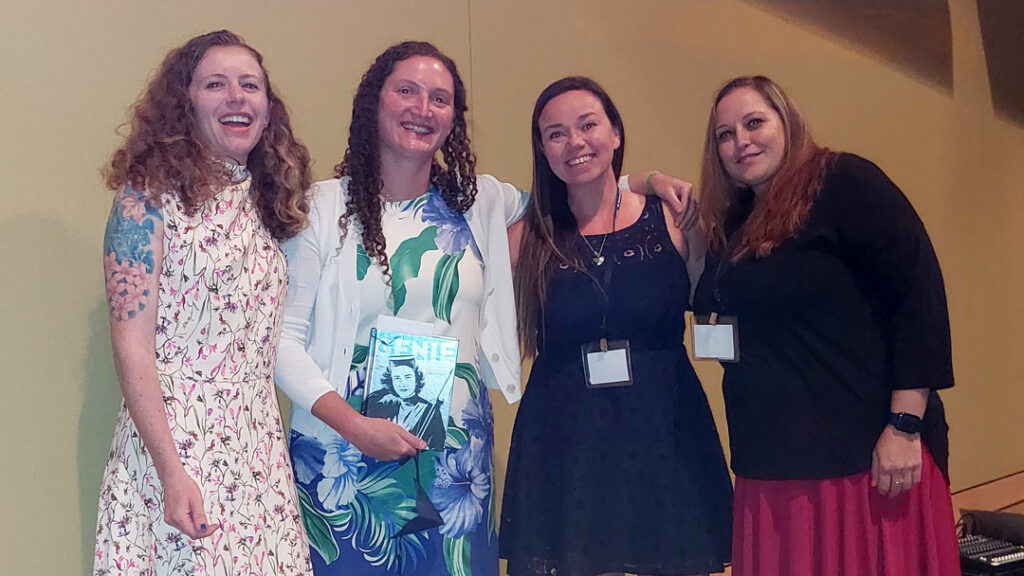
Previous recipients of the Eugenie Clark award, from left to right: Kady Lyons (2016), Jennifer Bigman (2022), Jill Brooks (2020) and Christine Bedore (2017). Photo © Jeremy Vaudo.
The Eugenie Clark Award was launched in 2015, after Eugenie’s passing, by the American Elasmobranch Society with the support of the Save Our Sea Foundation and the Mote Marine Laboratory. The $2,500 Eugenie Clark Award is granted to female early-career scientists who are part of the AES and demonstrate perseverance, dedication and innovation in biological research and public outreach for sharks, rays and other elasmobranch fishes – just as Clark did. Through this award, we hope to ensure the legacy of the ‘Shark Lady’ will live on and that future female scientists will continue to contribute towards shark research.
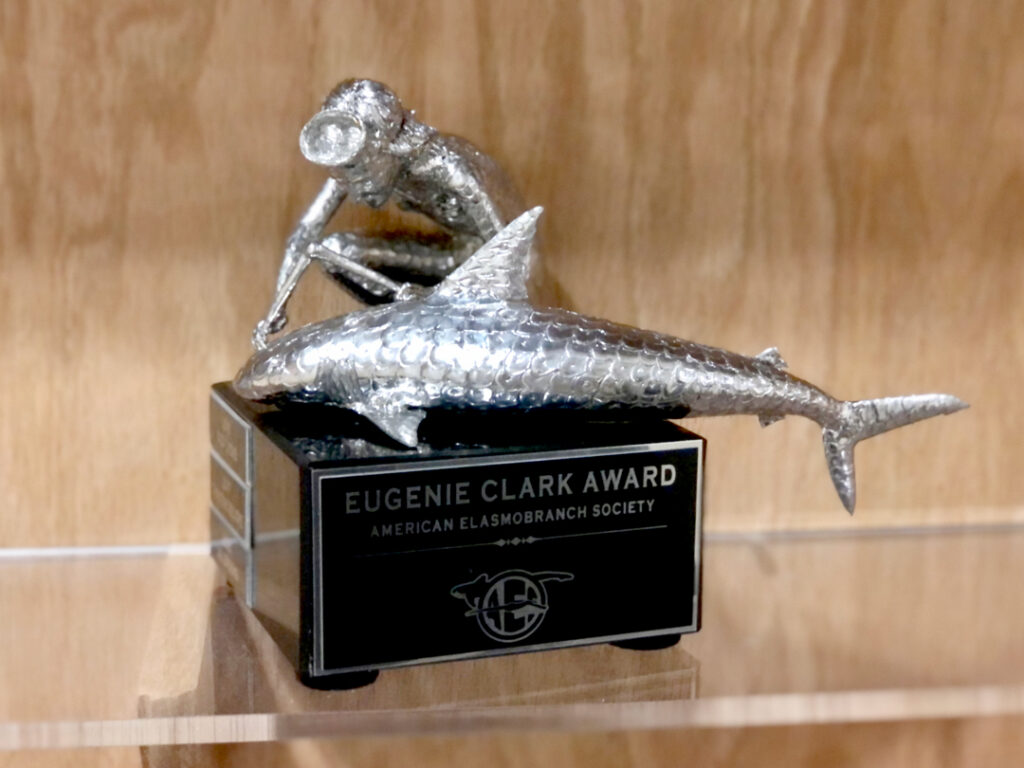
The Eugenie Clark Award on display at Mote Marine Laboratory. Photo © Mote Marine Laboratory
Dr Eugenie Clark (1922 – 2015) was a pioneer in research on the biology of elasmobranch fishes, and she was able to forge her career during a time when women were discouraged from becoming research scientists. Clark was instrumental in educating thousands of college students, and she contributed to hundreds of technical publications, as well as many books and articles for popular audiences. She passed away at the age of 92.
Clark made her mark in understanding the natural history, reproductive biology and behaviour of sharks and other fishes. The ‘Genie’ Award will honour her, and continue her legacy of inspiring and encouraging excellence among other young women. The Eugenie Clark Award has previously been honoured to Kady Lyons (2016), Christine Bedore (2017), Jill Brooks (2020) and Brit Finucci (2021).
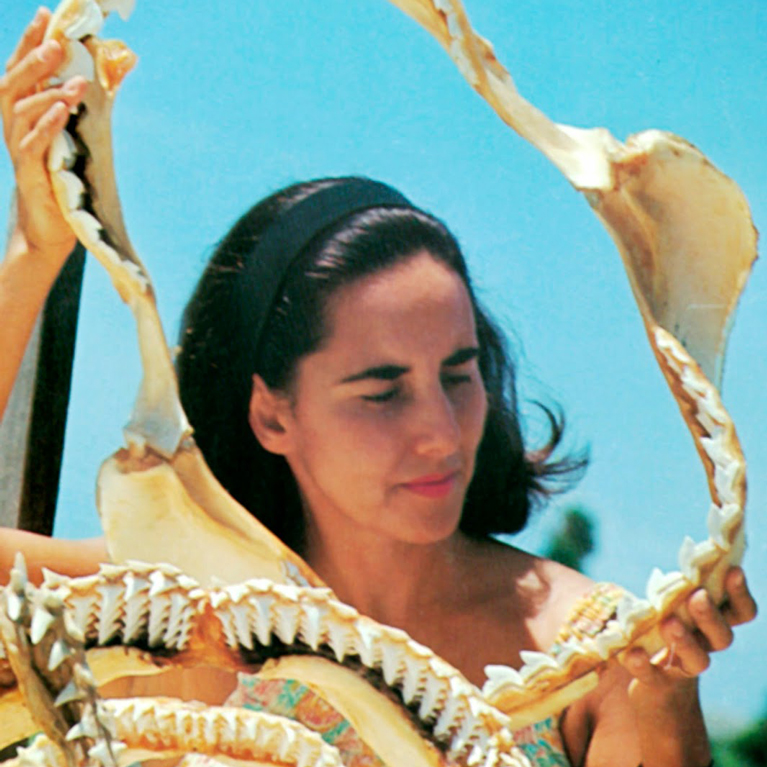
A Q&A with Jennifer Bigman
What inspired you to pursue and career in shark and ray research?
I’ve been interested in sharks and rays for as long as I can remember — I told my parents which college I was going to attend for a marine biology degree when I was just five years old (and actually went there)! I stuck with it and couldn’t imagine doing anything else. I am passionate about sharks and rays, particularly in terms of understanding how life histories and population dynamics vary with environmental and oceanographic variability.
How has Genie’s career and legacy influenced you?
I have always been inspired by Genie Clark’s career and I am honoured to be recognized as someone who is carrying on her legacy. Genie’s perseverance and dedication to not only research but mentoring and outreach has been crucial to my development as a scientist. I aim to continue being active in elasmobranch research, as well as outreach and education. Additionally, Genie showed us that women can be scientists — this has always motivated me as a female shark scientist!
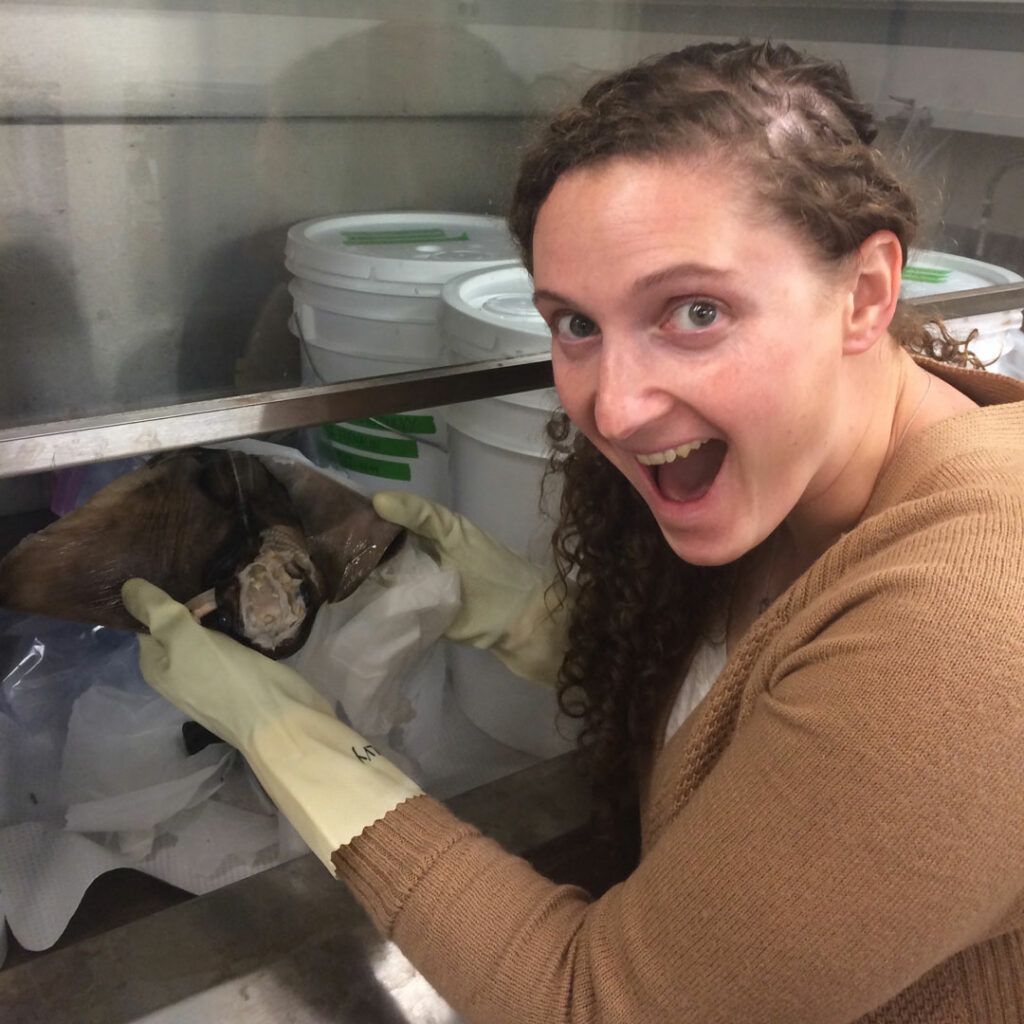
Can you tell us a little more about the work that you are currently doing?
I am currently working on understanding how climate change, particularly warming temperatures and declining oxygen availability, is affecting fish size, growth, and reproduction. I also have ongoing projects focused on a variety of topics including understanding the physiological basis of life histories and population dynamics and using morphology to understand physiology.
From a conservation perspective, why is your work important?
My work tries to develop tools that can be used to identify which species are intrinsically more sensitive to fishing and other anthropogenic threats, such as climate change. For example, gill surface area and other external morphological traits (gill slit height, aspect ratio of the caudal fin) show promise in helping us understand growth and other life-history traits, which inform conservation and management. Additionally, I use models to predict how ecological and physiological processes will change in the future, which helps us understand, prepare for, and mitigate species’ responses to climate change.
What are your hopes for the future of the field of elasmobranch conservation?
My hope is that we, as a field, continue to work together to push elasmobranch conservation forward. There are many conservation goals and interests but limited resources. I am continually impressed by our ability to make a difference and collaborate to ensure the future of sharks and rays (they are older than trees after all!).
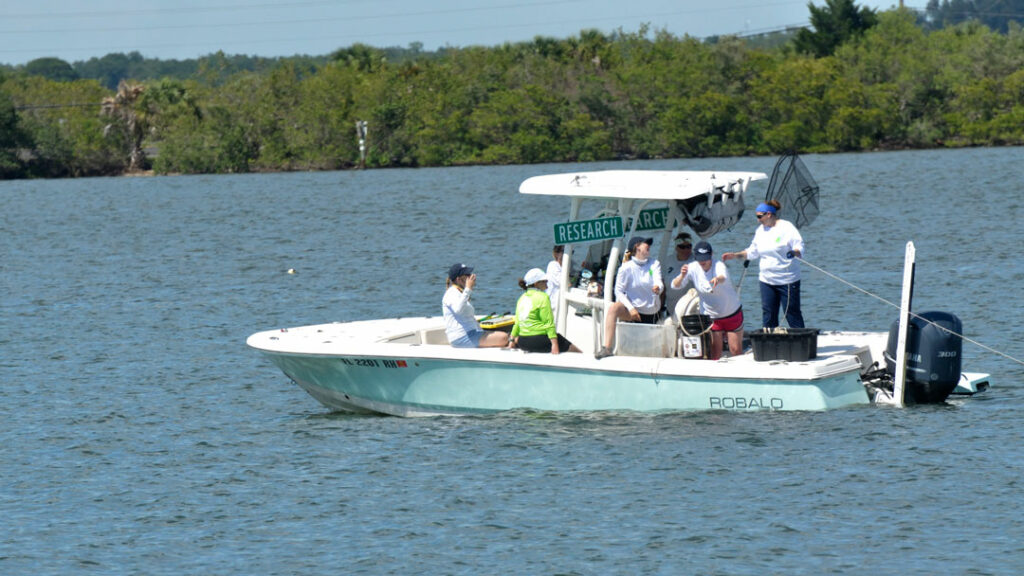
Jen baiting during fieldwork.
